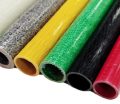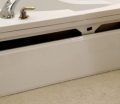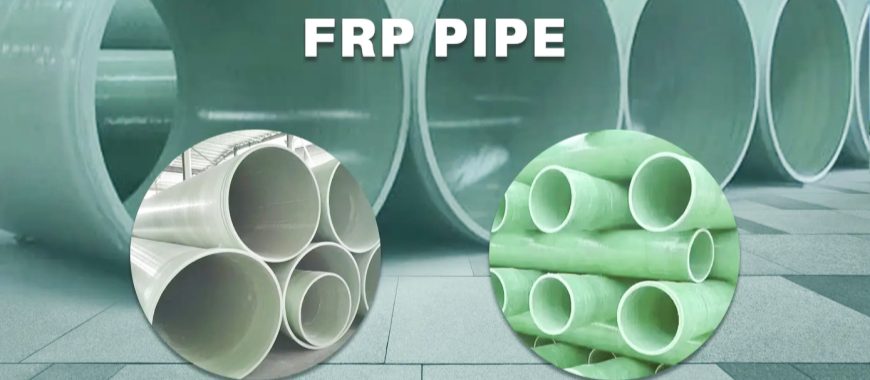
Fiber-Reinforced Plastic (FRP), a composite material made of a polymer matrix reinforced with fibers such as glass, carbon, or aramid, is well-known for its high strength-to-weight ratio, durability, and resistance to corrosion and chemicals. Among the diverse applications of FRP, one product that has steadily risen in popularity across various industries is the China FRP cable threading pipe. Certified China FRP cable threading pipe is made of fiberglass reinforced materials with many excellent characteristics. This specialized type of pipe, engineered for the protection and routing of cables, combines the inherent advantages of FRP materials with the manufacturing prowess of Chinese industry. Its growing demand is a testament to its effectiveness in infrastructure projects worldwide, where the need for reliable, long-lasting, and efficient cable management solutions is ever-present. As industries continue to evolve with advancing technologies, the role of China FRP cable threading pipe becomes increasingly indispensable for modern installations and developments.
What is China FRP Cable Threading Pipe?
China FRP cable threading pipe refers to a specific type of conduit manufactured using Fiber-Reinforced Plastic (FRP) that originates from China. These pipes are designed to encase and protect electrical and communication cables, providing a robust and durable pathway. They are commonly used in a variety of settings due to their exceptional properties. Below we outline nine common uses of these pipes:
Underground Installations: Often used to protect cables from moisture and soil pressure beneath the earth’s surface.
Industrial Environments: Protects cabling from chemical and thermal exposure in factories and plants.
Public Infrastructure: Utilized in the construction of bridges, tunnels, and roads to safeguard cables against environmental stressors.
Office Buildings: They facilitate safe and discrete routing of telecommunications and power cables in commercial settings.
Utility Networks: Essential for creating resilient power grids and communication networks.
Marine Applications: Ideal for environments exposed to saltwater, which can cause corrosion.
Railway Systems: Ensure reliable signal and power connections by resisting vibrations and shocks.
Renewable Energy Farms: Used to efficiently manage and safeguard cables in wind and solar energy installations.
Residential Complexes: They serve to secure the electrical framework in large residential developments.
Characteristics that Make it Suitable for Cable Protection
The suitability of the China FRP cable threading pipe for cable protection comes from a set of distinguishing features, which include but are not limited to:
Corrosion Resistance: FRP material withstands harsh chemicals and environmental conditions without deteriorating.
Lightweight: Easier to handle, transport, and install compared to traditional metal conduits.
High Strength: The pipes hold up under intense physical stress, preserving the integrity of enclosed cables.
Electrical Insulation: Offers excellent dielectric strength, preventing electrical interference.
Thermal Resistance: Capable of withstanding wide temperature variations, making them suitable for extreme environments.
Dimensional Stability: Maintain their shape and integrity over time, ensuring consistent protection.
Ease of Installation: Can be easily cut and joined on-site, which minimizes installation times.
Longevity: Their durability translates into a longer service life with less need for replacement or maintenance.
Environmental Resistance: Resists UV rays, moisture, and pest infestation, crucial for outdoor and underground applications.
China FRP cable threading pipes represent a harmonious combination of material innovation and practical design. These pipes are redefining the standards for cable protection with their unparalleled qualities, contributing to the safety and sustainability of modern infrastructural solutions across the globe.
FRP Pipe MSDS for Safe Handling Practices
China FRP Cable Threading Pipe Certifie Standard
The China FRP Cable Threading Pipe Certificate Standard refers to the set of regulations, technical specifications, and quality requirements that govern the manufacturing, testing, and certification of FRP (Fiber Reinforced Plastic) cable threading pipes in China. These standards ensure the safety, durability, and reliability of these pipes, which are widely used in infrastructure and electrical engineering projects for cable protection and routing.
Key Elements of the Standard
- Material Requirements:
- Specifies the quality of raw materials, such as resin and fiber reinforcements.
- Details the chemical and physical properties, including fire resistance, corrosion resistance, and mechanical strength.
- Dimensional Specifications:
- Includes precise measurements for wall thickness, diameter, and length tolerances.
- Provides guidance on permissible deviations to ensure compatibility with construction needs.
- Mechanical Properties:
- Stipulates minimum strength requirements, including tensile strength, compressive strength, and impact resistance.
- Tests for flexibility to withstand external forces without cracking or deforming.
- Thermal Properties:
- Addresses heat resistance to ensure pipes can perform under high-temperature conditions.
- Defines standards for thermal expansion and insulation.
- Environmental Performance:
- Focuses on corrosion resistance, particularly against chemicals, water, and soil conditions.
- Specifies resistance to UV radiation for outdoor installations.
- Fire Resistance:
- Establishes criteria for flame retardancy to enhance safety in fire-prone environments.
- Electrical Insulation:
- Ensures the pipe material has sufficient dielectric strength to prevent electrical leakage or short circuits.
- Manufacturing and Processing:
- Defines acceptable production methods, such as filament winding or pultrusion.
- Provides standards for the surface finish, ensuring smoothness to protect cables during installation.
- Testing Procedures:
- Includes detailed methods for conducting quality assurance tests, such as hydrostatic pressure tests, impact tests, and bending tests.
- Requires third-party or government-accredited laboratories to verify compliance.
- Marking and Identification:
- Specifies labeling requirements, including the product’s standard code, manufacturer details, and production date.
- Certification Requirements:
- Products must pass quality inspections and meet all criteria outlined in the relevant GB/T (Guobiao/Tuijian, or national recommended standard) or industry-specific standards.
- Certification by authorized bodies ensures market entry and compliance with construction regulations.
- Usage Guidelines:
- Recommends best practices for installation, including minimum bending radii, joint methods, and load capacities.
Relevant Standards and Codes
In China, the FRP cable threading pipe standards often align with or are part of broader national standards, such as:
- GB/T Standards: Governing testing methods and quality benchmarks.
- JG Standards: Relating to construction materials.
- CJJ Standards: Urban construction-specific standards.
Certification Process
- Application: Manufacturers apply for certification by submitting technical documents, material samples, and test reports.
- Inspection: An accredited body inspects the manufacturing facility and samples.
- Testing: Pipes undergo various tests to ensure they meet the outlined standards.
- Approval: Successful products are granted a certificate, often valid for a specific period and subject to renewal.
The certification standard is critical for ensuring the safety and efficiency of electrical systems in urban and industrial infrastructure. It supports sustainable development by promoting the use of durable, eco-friendly materials and reducing the risks associated with substandard products.
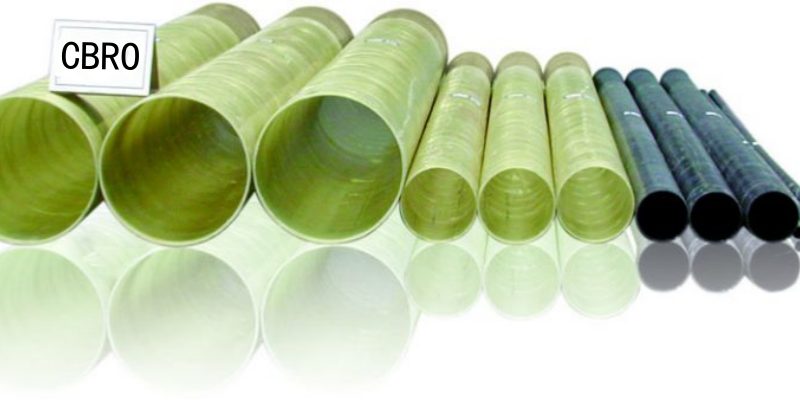
Cost of China FRP Cable Threading Pipe
FRP (Fiber Reinforced Plastic) cable threading pipes are a type of lightweight, high-strength, and corrosion-resistant material widely used for protecting and routing electrical cables. Manufactured through advanced composite technologies, these pipes offer advantages such as durability, flexibility, and resistance to harsh environmental conditions, making them an ideal choice for underground and industrial applications.
Cost Influencing Factors
The cost of FRP cable threading pipes in China varies depending on several factors:
Material Composition
- High-grade fibers and resins increase the cost due to their enhanced durability and resistance properties.
- Standard-grade materials offer cost efficiency but may compromise on longevity or specific performance metrics.
Pipe Dimensions
- Diameter and wall thickness significantly impact the price. Larger and thicker pipes require more raw materials, thus increasing the cost.
- Length per unit also affects pricing as longer pipes might offer economies of scale in production.
Manufacturing Process
- Advanced manufacturing processes like filament winding or pultrusion are more expensive but yield higher-quality pipes.
- Simpler methods may reduce costs but can result in pipes with lower performance metrics.
Customization and Standards Compliance
- Custom sizes, shapes, or performance specifications tailored to unique project needs may elevate costs.
- Compliance with international standards (e.g., ISO, ASTM) can add to the price due to rigorous testing and certification processes.
Quantity Ordered
- Bulk purchases often qualify for significant discounts due to economies of scale.
- Small batch orders may be more expensive per unit.
Geographical and Economic Factors
- Costs of raw materials and labor in China play a crucial role in determining the base price.
- Export-related costs, such as tariffs and shipping, influence the final price for international buyers.
Typical Price Range
- Standard FRP Pipes: $5–$15 per meter depending on size and grade.
- High-Performance FRP Pipes: $15–$50 per meter for customized or advanced-grade pipes.
- Bulk Pricing: Discounts of 10-30% may apply for orders exceeding 1,000 meters.
Applications and Value for Money
FRP cable threading pipes are particularly cost-effective in:
- Underground electrical cable protection due to their non-corrosive properties.
- Industrial environments where resistance to chemicals, high temperatures, and mechanical stress is required.
- Infrastructure projects requiring long service life and low maintenance costs.
Supplier-Specific Factors
- Established manufacturers with certifications may charge premium prices but guarantee higher quality.
- Smaller manufacturers may offer competitive prices but might lack consistency or certification assurance.
The cost of China FRP cable threading pipes depends on the specific project requirements and the quality levels demanded. Buyers should consider balancing cost with performance to ensure the best value for their investment.
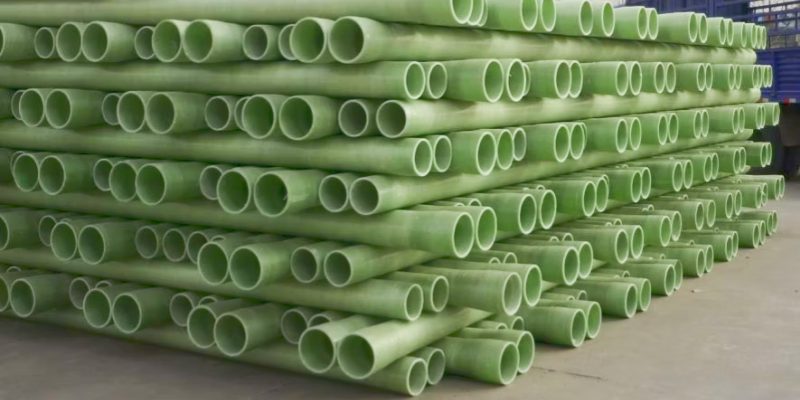
Why Choose China FRP Cable Threading Pipe
China is a global leader in the production of FRP (Fiber Reinforced Plastic) cable threading pipes, offering a combination of affordability, quality, and advanced manufacturing techniques. Here are the key reasons to choose China-made FRP cable threading pipes:
Competitive Pricing
Chinese manufacturers benefit from efficient production processes and lower labor costs, making their products cost-effective. Large-scale manufacturing further reduces unit costs, offering buyers excellent value for money without compromising on quality.
High-Quality Standards
China’s FRP cable threading pipes are manufactured using premium-grade materials such as high-strength fibers and durable resins. Many manufacturers adhere to international standards such as ISO, ASTM, and IEC, ensuring consistent performance. Advanced technologies like pultrusion and filament winding are used to deliver pipes with superior mechanical and physical properties.
Wide Product Range
Manufacturers in China offer a diverse selection of pipe sizes, including various diameters, wall thicknesses, and lengths to suit specific project needs. Customization options are available to cater to unique requirements, such as specialized coatings or reinforced designs for high-pressure or chemically exposed environments.
Excellent Durability and Performance
FRP pipes from China are known for their resistance to corrosion, lightweight construction, and high strength-to-weight ratio. These features make them easy to transport and install while providing a long service life with minimal maintenance. They are also resistant to temperature variations, aging, and mechanical stress.
Proven Reliability in Diverse Applications
China’s FRP cable threading pipes are widely used in a range of sectors, including electrical, communication, and industrial applications. They are particularly well-suited for underground installations, harsh industrial environments, and renewable energy projects like solar and wind farms.
Availability and Quick Delivery
With massive production capacities, Chinese manufacturers can fulfill large orders with short lead times, ensuring quick delivery to meet project deadlines. Efficient logistics and export networks further enhance their global reach.
Strong Manufacturer Support
Chinese manufacturers provide comprehensive support, including technical consultations, detailed product specifications, and certifications to meet international compliance standards. Many offer robust warranties and after-sales service to ensure customer satisfaction.
Sustainability Focus
Many Chinese manufacturers adopt eco-friendly production practices, reducing waste and emissions. FRP pipes themselves are recyclable and environmentally friendly, making them a sustainable choice for modern infrastructure projects.
Growing Reputation
China’s FRP cable threading pipes are used in numerous high-profile projects worldwide, showcasing their reliability and quality. Continuous investment in research and development ensures that Chinese manufacturers remain leaders in innovation and product advancements.
Choosing China FRP cable threading pipes provides a balance of cost-efficiency, durability, and advanced design. They are a reliable choice for a wide range of applications, backed by strong manufacturer support and global recognition.
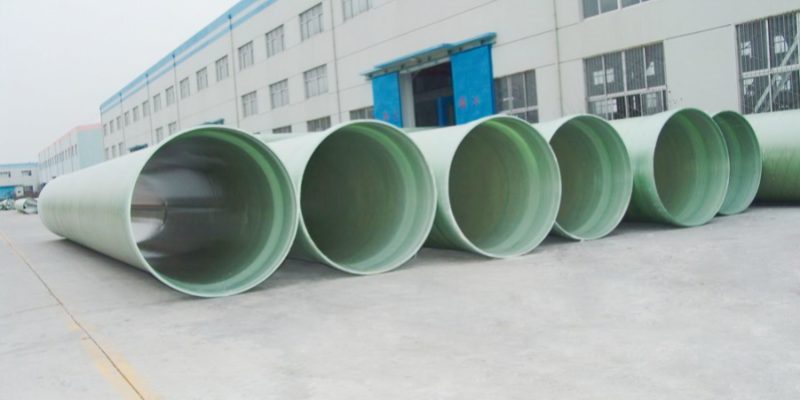
Navigating the World of China FRP Cable Threading Pipe Suppliers
China’s China FRP cable threading pipe supplier industry is an integral component of the global supply network, substantially leading in production, innovation, and export volumes. As the demand for robust and durable cable protection solutions grows worldwide, China FRP cable threading pipe suppliers are pivotal in meeting these needs. Here, we delve into both the broad market landscape of China FRP cable threading pipe suppliers and the distinct characteristics that set them apart.
Overview of the market landscape in China for FRP cable threading pipes
In recent years, China has cemented its position as a global leader in the FRP cable threading pipe industry, including innovations in China FRP spraying pipe. This growth highlights the country’s commitment to advancing fiber-reinforced polymer technologies and meeting the increasing demand for durable and efficient piping solutions across various sectors.The nation’s commitment to producing high-quality, cost-effective solutions is evident through its expansive manufacturing infrastructure and the strategic alignment of regional hubs of production. Below is a more detailed look at several key aspects of the market landscape:
Extensive Network of Manufacturers: China hosts a wide array of FRP cable threading pipe manufacturers, ranging from large-scale enterprises to smaller, specialized factories. This diversity ensures a broad selection of products to meet various specifications and application needs.
Regional Specialization: Certain areas within China are renowned for their specialized production capabilities; for instance, Eastern provinces are noted for their high-tech manufacturing processes in FRP production.
Innovation and R&D Focus: Several firms dedicate significant resources to research and development to push the boundaries of what FRP cable threading pipes can accomplish, focusing on longer lifecycle and enhanced performance features.
Vertical Integration: This approach is common among many Chinese suppliers who control both the suppliance of raw materials and the final manufacturing process, enhancing both quality control and pricing.
Export-Oriented Businesses: Geared towards serving an international clientele, these suppliers uphold stringent quality controls to comply with global standards, aiding them in competing internationally.
Government Support: Incentives and subsidies provided by the government fortify the production and export of FRP cable threading pipes, bolstering China’s dominance in the market.
Adaptability to Market Demands: Agility in production and customization capabilities makes Chinese manufacturers particularly adept at fulfilling diverse market requirements.
Eco-Friendly Production Practices: An increasing number of producers now embrace sustainable practices, mitigating environmental impact while still delivering high-quality products.
Key features that distinguish Chinese suppliers
Chinese FRP cable threading pipe suppliers are noted not only for their scale and scope but also for their distinct characteristics that make them competitive at a global level. Here’s an insight into some of these unique traits:
Cost-Effectiveness: By optimizing production processes and achieving economies of scale, these suppliers manage to offer affordable products without sacrificing quality.
Quality Assurance: Strong adherence to international quality standards is a priority for many suppliers, ensuring reliability and customer trust.
Comprehensive Product Ranges: From varying dimensions and strength ratings to different resistances (chemical, thermal, etc.), Chinese suppliers stock an extensive array of products.
Advanced Manufacturing Technology: Incorporation of cutting-edge machinery and innovative manufacturing techniques ensures the high quality and reliable performance of the FRP pipes.
Flexible MOQs (Minimum Order Quantities): Suppliers cater to both large-scale industrial needs and smaller, bespoke requests efficiently.
Robust Logistics and Supply Chain: The maturity of logistics networks facilitates efficient product delivery worldwide.
After-Sales Services: Comprehensive after-sales support, from troubleshooting to maintenance, underscores the suppliers’ commitment to customer satisfaction.
Cultural Understanding of Global Markets: Experience and insights into international market dynamics equip Chinese suppliers with the expertise to handle global business effectively and intuitively.
These comprehensive insights into both the market landscape and the distinct characteristics of Chinese FRP cable threading pipe suppliers illustrate a sector that is both dynamic and forward-thinking, ideally positioned to meet global demands.nance requirements. The combination of these advantages makes FRP an excellent choice for projects requiring reliable and efficient cable protection.
China FRP Cable Threading Pipe Manufacturers
The manufacturing landscape in China, especially within the FRP cable threading pipe sector, has evolved significantly over the years. Today, it not only emphasizes efficiency and scalability but also innovation and quality. As we delve into the specifics, it’s clear that Chinese manufacturers have embraced a multifaceted approach to stay ahead. This entails not just adopting advanced manufacturing techniques but also setting new benchmarks in quality and innovation.
Manufacturing Processes Prevalent in China
Before exploring the individual techniques, it’s pertinent to understand the overarching strategy that China FRP cable threading pipe supplier follows. This strategy hinges on flexibility, precision, and sustainability. By integrating advanced manufacturing processes that leverage automation, material science, and eco-friendly practices, these China FRP cable threading pipe suppliers ensure a high output rate while minimizing environmental impact. Here’s a closer look at some of these processes:
Automated Fiber Placement (AFP): Many leading China FRP cable threading pipe manufacturers utilize AFP technology, which allows for precise fiber placement and increased production speeds, enhancing overall efficiency.
Continuous Fiber Manufacturing: This process is prevalent among manufacturers who strive for strength and durability in FRP pipes. It involves the continuous laying of fibers along the length of the pipes, which significantly improves the structural integrity. The FRP pipe tensile strength is greatly enhanced by this technique, as the continuous fibers provide excellent resistance to tension and ensure that the pipes can withstand high-stress conditions without failure.
Resin Transfer Molding (RTM): RTM is used to achieve high-quality surface finish and intricate designs, important for specific technical applications where precision is paramount.
Pultrusion Technology: In this process, fibers are pulled through a resin mixture and then through a heated die to form pipes. This method is highly favored for its ability to produce consistent, high-quality products at a low cost.
Filament Winding: This method is particularly popular for creating high-pressure pipes. It involves winding fiber strands soaked in resin around a rotating mandrel, allowing for high-tensile strength. The process is typically carried out using a GRP FRP Pipe Filament Winding Machine, which automates the winding process, ensuring consistent quality and precision in the production of high-strength, durable pipes.
3D Printing of Components: Some manufacturers employ advanced 3D printing to produce complex fittings and components for FRP cable threading pipes, which allows for greater customization and innovation.
Recycling and Reusing Scrap Materials: Increasingly, manufacturers integrate sustainable practices by recycling scrap and cut-offs from the production process, minimizing waste and reducing production costs.
Integrated Quality Control Systems: Many factories have implemented automated quality control systems that monitor and adjust the manufacturing parameters in real-time, ensuring that each batch of FRP pipes meets the high standards required.
Innovations and Quality Standards Adopted by Chinese Manufacturers
The commitment to quality and innovation in China’s FRP cable threading pipe industry is clearly reflected in the adoption of new materials, standards, and technologies. These innovations are not just about keeping up with global trends but setting new industry standards. Here’s an exploration of these advances:
Use of Nanomaterials: To enhance the mechanical properties of FRP pipes, nanomaterials are often incorporated into the resin matrix, offering better performance under extreme conditions.
Smart Manufacturing Practices: IoT (Internet of Things) technology is widely adopted for real-time monitoring of the production line, allowing for immediate adjustments and predictive maintenance.
Hyperbaric Testing for Pressure Resistance: FRP pipes meant for high-pressure environments undergo rigorous hyperbaric testing to ensure reliability and safety.
UV Protection Technology: Innovations include adding layers or coatings that protect the FRP from ultraviolet light degradation, crucial for maintaining the material’s integrity over long periods.
Fire-Resistant Formulations: Adding fire retardant FRP additives into the resin mixture is a significant innovation, enhancing the fire resistance of the FRP cable threading pipes, which is crucial for certain applications.
ISO Compliance: Most China FRP cable threading pipe manufacturers adhere strictly to ISO quality management systems, ensuring standardized procedures and products of consistent quality.
Antimicrobial Treatments: Innovatively adding antimicrobial treatments during the manufacturing process prevents the growth of mold and bacteria on the pipes, which is especially beneficial in humid or wet environments.
Customizable Modulus Technology: This technology allows manufacturers to alter the stiffness and flexibility of FRP pipes according to specific customer requirements, showcasing the versatility of FRP technology.
The pragmatic approach of Chinese FRP cable threading pipe manufacturers toward manufacturing and innovation significantly contributes to their leading position on the global stage. By harmonizing cutting-edge techniques with stringent quality controls, they ensure the production of superior FRP pipes, setting new industry benchmarks.
Exploring the Advanced Manufacturing Capabilities of a China FRP Cable Threading Pipe Factory
Fiberglass Reinforced Plastic (FRP) pipes are critical components in various industries, ranging from telecommunications to utility management. The China FRP Cable Threading Pipe Factories specialize in the production of these high-quality pipes, recognized for their durability, lightweight properties, and resistance to corrosion. Located in the industrial heartlands of China, these factories are outfitted with cutting-edge technology and follow rigorous standards to meet both local and international demands.
Insight into the Factory Environments Where These Pipes Are Made
The environments in which FRP pipes are manufactured in China are highly controlled and optimized to ensure efficiency and quality. Here are some insights into these dedicated factory settings:
Specialized Work Areas: Each production stage, from resin mixing to curing, happens in specially designated zones equipped with tailored machinery.
Controlled Climate Conditions: Factories maintain specific temperature and humidity levels critical for high-quality FRP pipe production via advanced climate control systems.
Health and Safety Protocols: Protection of workers is paramount, with strict protocols and regular training on handling hazardous materials safely.
Waste Management Systems: They employ state-of-the-art waste management systems to handle byproducts responsibly and sustainably.
Advanced Monitoring Systems: Real-time monitoring systems track every phase of production, ensuring standards are adhered to meticulously.
Research and Development Labs: In-house R&D allows for the continuous innovation of FRP materials and manufacturing processes.
Employee Training Centers: Comprehensive training programs ensure workers are skilled in the latest production technologies.
Logistics and Supply Chain Integration: Efficient supply chain integrations optimize both the intake of raw materials and distribution of the finished products.
How These Factories Maintain Consistent Quality and Manage Large Scale Production
Ensuring consistent quality and managing large-scale production are central to the operations of China FRP cable threading pipe factories. Here’s how they achieve this:
Standardized Manufacturing Processes: They adhere to strict manufacturing protocols which standardize the quality across all products.
Quality Control Teams: Dedicated teams perform continuous quality checks throughout the production process to ensure each product meets stringent standards.
Scalable Production Lines: Flexibility in production volume is achieved through scalable lines that adjust according to market demand.
Automation and Robotics: Automation enhances precision in production, reduces errors, and accelerates throughput.
Supplier Quality Management: Stringent supplier assessment ensures that only the highest quality materials are used.
Lean Manufacturing Principles: These principles are applied to streamline operations, reduce waste, and utilize resources effectively.
Continuous Improvement Programs: Ongoing programs aim at refining processes and product quality through feedback and new technologies.
Customer Feedback Integration: Regular feedback from clients is incorporated into process improvements and product upgrades.
Through these comprehensive strategies and continuous enhancements, China FRP cable threading pipe factories maintain a competitive edge in producing superior FRP pipes that meet global standards.
Why Choose FRP Pipe Experts for Industrial Pipe Repairs
To Know China FRP Cable Threading Pipe Exporter
China has firmly established itself as a leading global exporter of FRP (Fiberglass Reinforced Plastic) cable threading pipes, leveraging its advanced manufacturing capabilities and extensive infrastructure. The country’s dominance in this sector is driven by several factors:
Comprehensive Manufacturing Ecosystem: China’s integrated supply chain, from raw material sourcing to finished goods, streamlines production and lowers costs.
Technological Innovation: Continuous investment in research and development has positioned Chinese exporters at the forefront of FRP technology.
Scale of Production: The sheer size of China’s manufacturing operation allows for mass production, which can meet global demand efficiently.
Cost-Effectiveness: Competitive pricing, owing to lower labor and production costs, makes China an attractive source for international buyers.
Quality Assurance: Improved quality control systems have elevated the standard of Chinese-made FRP pipes to world-class levels.
Customization Capabilities: Flexibility in design and production enables Chinese exporters to cater to specific global market requirements.
Efficient Logistics and Distribution: Advanced logistics capabilities ensure timely and reliable delivery of FRP pipes worldwide.
Government Support: Pro-export policies and subsidies have further bolstered China’s status as a leading exporter.
Benefits for International Buyers Sourcing from China
International buyers reap numerous benefits when sourcing China FRP cable threading pipe, including:
Diverse Product Range: Access to a wide array of product specifications and custom solutions to meet diverse application needs.
Cost Savings: Competitive pricing offers significant cost advantages, especially for bulk orders.
High-Quality Standards: Rigorous quality control aligns products with international quality standards.
Rapid Production Times: Efficient manufacturing processes and vast capacity lead to shorter lead times.
Innovation and Adaptability: Exposure to the latest advancements and customization according to buyer needs.
Streamlined Procurement Process: Integrated supply chains and experienced exporters simplify the purchasing process.
Market Expansion Opportunities: Leveraging China’s diverse product range to introduce new solutions to local markets.
Reliable After-Sales Support: Strong customer service and support frameworks provide peace of mind to buyers.
Applications of China FRP Cable Threading Pipes
The versatility of FRP cable threading pipes exported from China means they are employed in numerous applications:
Underground Cable Protection: Offers robust protection for communication and power cables against environmental and mechanical damage.
Industrial Process Piping: Utilized in chemical, petrochemical, and water treatment plants for conveying corrosive substances.
Marine Applications: Suited for underwater cable housing, offering corrosion resistance in saltwater environments.
Renewable Energy Systems: Used in the transportation of cables for wind and solar energy farms.
Infrastructure Projects: Integral to bridge constructions, tunneling, and highway projects for utility and telecommunications networks.
Building and Construction: For electrical and communication cable management within commercial and residential buildings.
Agricultural and Irrigation Systems: Employed in water conveyance and drainage systems in agricultural settings.
Telecommunications Networks: Essential for the protection and organization of fiber-optic cables.
Choosing the Right Supplier or Manufacturer
When selecting a FRP cable threading pipe supplier or manufacturer from China, consider the following:
Manufacturing Capabilities: Assess the potential supplier’s production capacity and technological prowess.
Quality Certifications: Verify ISO certifications and other relevant quality standards compliance.
Product Range: Ensure they offer products that meet your specific requirements.
Market Experience: Prioritize suppliers with experience in your target market or sector.
Innovative Ability: Look for evidence of innovation and design flexibility.
Pricing Structure: Competitive pricing should not compromise product quality.
Customer Service: Strong after-sales support and communication are crucial.
Environmental and Safety Standards: Compliance with environmental regulations and safety standards.
Importance of Certifications and Standards Compliance
For international buyers, certifications and compliance with standards are key when sourcing FRP cable threading pipes:
Ensures Product Quality: Certifications like ISO 9001 indicate adherence to international quality management principles.
Compliance with Safety Standards: Safety certifications assure that the products meet required safety guidelines.
Environmental Responsibility: Environmental certifications ensure the suppliers are minimizing their ecological impact.
Market Accessibility: Products adhering to specific standards are more readily accepted in certain markets, removing barriers to entry.
Risk Mitigation: Compliance reduces the risk of receiving substandard or non-compliant products.
Reputation: Certifications enhance the supplier’s credibility and reliability among global buyers.
By prioritizing these aspects, international buyers can secure quality China FRP cable threading pipe products that meet their needs and comply with global standards, ensuring both performance and durability.
Delamination in FRP Pipe Failure Modes: Causes and Solutions
FAQs about China FRP Cable Threading Pipe
FRP (Fiberglass Reinforced Plastic) and PVC (Polyvinyl Chloride) pipes are widely used in various applications from industrial to domestic installations. The primary difference between them lies in their material composition, strength, durability, and application versatility.
FRP pipes are composite materials made from a polymer matrix reinforced with fibers, typically glass. This composition provides high strength-to-weight ratio, corrosion resistance, and durability. They can withstand harsh chemical environments and are suitable for high-pressure applications. Furthermore, FRP pipes are thermally and electrically non-conductive and have a low thermal expansion rate.
On the other hand, PVC pipes are made from a plastic polymer and are suitable for a wide range of applications, including potable water supply, sewage systems, and irrigation. PVC pipes are lightweight, easy to install, have good chemical resistance, and are cost-effective for many applications. However, they tend to have a lower temperature and pressure rating compared to FRP pipes and can become brittle over time under certain conditions.
In summary, the choice between FRP and PVC pipes depends on specific project requirements such as chemical resistance, pressure and temperature ratings, durability, and cost.
While FRP pipes offer numerous advantages such as high strength, corrosion resistance, and long service life, there are certain limitations to their use:
Initial Cost: The upfront cost of FRP pipes can be higher than traditional materials like PVC or steel, particularly for custom applications.
Handling and Installation: FRP pipes require specialized handling and installation procedures due to their material characteristics. Improper installation can lead to system failure.
Repair and Modification: Repairing or modifying FRP systems can be more complex than with other materials. Special techniques and materials are required, and not all contractors may be familiar with these processes.
UV Sensitivity: Continuous exposure to ultraviolet (UV) light can degrade the resin component of FRP, affecting its lifespan. Protective coatings or UV inhibitors are typically necessary for outdoor applications.
Conductivity and Heat Resistance: While FRP pipes have good insulating properties, they may not be suitable for applications requiring electrical conductivity or high temperature resistance beyond certain limits.
Despite these disadvantages, the long-term durability and resistance to corrosion and chemical attack often make FRP pipes a cost-effective choice over their lifecycle for many applications.
The life expectancy of FRP pipes, referred to as frp pipe life expectancy, usually exceeds 25 years and can reach up to 50 years or more, depending on the application, environmental conditions, and adherence to proper installation and maintenance procedures. FRP’s resistance to corrosion, chemical attack, and abrasion contributes to its long service life, particularly in harsh industrial environments or in cases where the conveyed fluids are aggressive. Regular inspections and maintenance can further extend the lifespan of FRP piping systems, ensuring they remain functional and safe over time. It’s also important to note that the specific resin and fiber materials used in the FRP, along with the manufacturing process, can affect the pipe’s longevity.
FRP (Fiberglass Reinforced Plastic) and GRP (Glass Reinforced Plastic) are terms often used interchangeably in the industry to describe a composite material made of a polymer matrix reinforced with glass fibers. Essentially, GRP is a type of FRP. The distinction, albeit minor, generally refers to the type of fiber reinforcement used; GRP uses glass fibers, while FRP may imply the use of other fiber types, such as carbon or aramid, alongside or instead of glass.
Both FRP and GRP pipes offer similar advantages, including high strength, corrosion resistance, and long service lives. The choice between them usually does not hinge on the material itself but on the specific requirements of the application, such as the needed strength, weight, and exposure conditions. In practice, however, the term FRP has become a more inclusive term encompassing all types of fiber-reinforced plastic pipes, including those reinforced specifically with glass fibers.
FRP stands for Fiberglass Reinforced Plastic. It is a composite material made from a polymer matrix reinforced with fibers like glass. FRP pipes are known for their high strength-to-weight ratio, corrosion resistance, and durability. They are commonly used in industries like chemical processing, water treatment, and construction where resistance to chemicals and environmental factors is essential.
FRP pipe joints come in various types, including:
Butt and Wrap Joint: Used for strong and durable connections.
Flanged Joint: Utilizes flanges bolted together for easy disassembly.
Bell and Spigot Joint: Features a gasketed push-fit connection.
Threaded Joint: Common for smaller-diameter pipes.
These joints ensure flexibility, leak-proof connections, and efficient installation.
Yes, FRP is generally stronger than PVC. FRP has higher tensile strength, durability, and resistance to extreme environmental conditions. It is better suited for applications involving high pressure, temperature, or exposure to corrosive chemicals. PVC, while cost-effective and easy to install, has lower mechanical strength and is more prone to damage under heavy loads or impact.
The three main types of plastic pipes are:
PVC (Polyvinyl Chloride): Widely used for water and drainage systems.
CPVC (Chlorinated Polyvinyl Chloride): Suitable for hot water applications.
HDPE (High-Density Polyethylene): Known for flexibility and durability, often used in underground utilities and gas pipelines.
Each type is selected based on its unique properties for specific applications.
PVC FRP refers to a combination of Polyvinyl Chloride and Fiberglass Reinforced Plastic. This hybrid material is used to enhance the mechanical properties of PVC while retaining its chemical resistance. PVC FRP pipes are often used in corrosive environments where extra strength and rigidity are needed, such as in chemical industries or wastewater management.
Several pipes are stronger than PVC, including:
FRP (Fiberglass Reinforced Plastic): Offers superior strength and corrosion resistance.
HDPE (High-Density Polyethylene): Known for high impact resistance and flexibility.
Steel or Ductile Iron Pipes: Provide unmatched strength for heavy-duty applications.
These alternatives are chosen based on the specific mechanical, thermal, and environmental requirements of the project.

As the editor of GangLong Fiberglass, I have years of experience and in-depth research, focusing on cable tray products, fiberglass solutions, and grille systems. I incorporate years of industry insights and practical experience into every content, committed to promoting the progress of the industry. At GangLong Fiberglass, my commitment is reflected in every product, from innovative cable trays to durable fiberglass solutions and sturdy grille systems. As an authoritative voice in the industry, my goal is to provide valuable information to professionals and businesses and promote forward-looking solutions.

